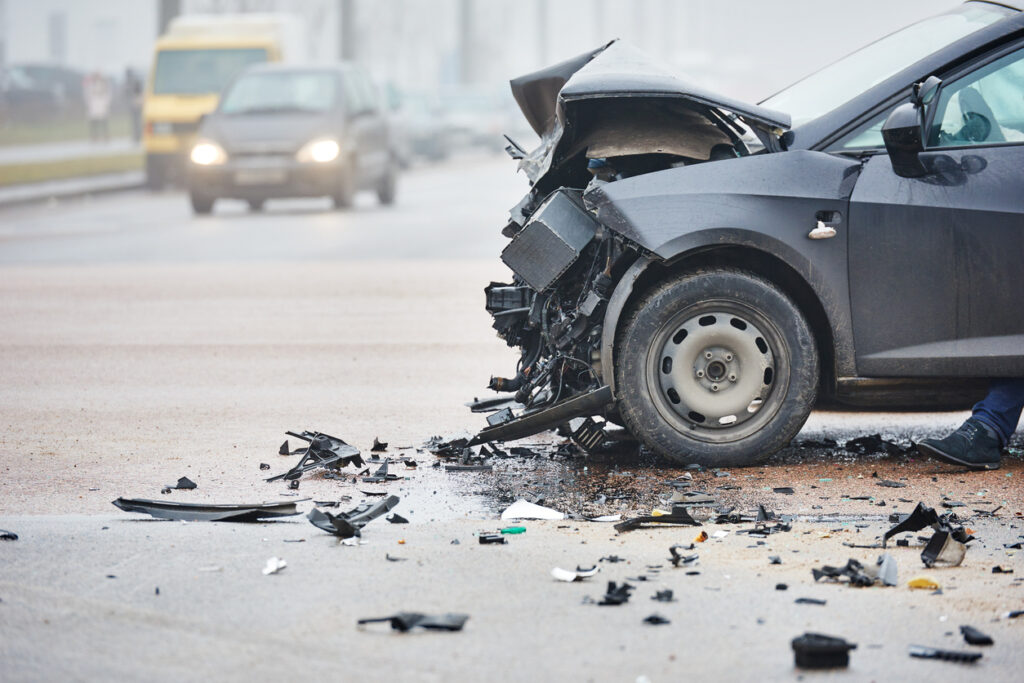CHICAGO, IL – Rear-end crashes are the most common type of car accident, according to the Illinois Department of Transportation. Rear-end crashes have a lower risk of causing fatal injuries than other types of collisions. However, these accidents can still cause serious head, neck and back injuries due to the whipping force your body experiences.
Common Rear-End Collision Injuries
Rear-end crashes cause injuries primarily through a whipping motion. The cycle of hyperextension and compression damages the structures in your neck and back. You can also injure your head and face if you strike your skull as your head whips around. Some common rear-end collision injuries include:
- Chest bruises can occur when your body hits your seat belt. The impact bursts blood vessels under the skin of your chest. In a severe crash, you can tear the cartilage in your chest or break a rib. Bruises cause pain, swelling and back or blue discoloration. Fortuntately, bruises usually heal within a few days with rest and home care.
- Neck strain or sprain are the most common whiplash injuries. A neck strain happens when the whipping of your head hyperextended your neck and causes the tendons and muscles in your neck to tear. Symptoms of a neck strain include neck pain, muscle spasms and swelling, and a week or stiff neck.Ligaments hold the vertebrae of your spine together. A neck sprain occurs when hyperextension damages or tears the neck ligaments. Symptoms of a sprained neck include spine pain and inflammation, limited range of neck motion, neck bruises and a popping sensation during your accident. Neck strains and sprains will heal with rest and anti-inflammatory drugs. If you suffer a severe strain, a doctor may recommend a neck brace. Neck strains and springs rarely require surgery.
- Bulging or herniated discs can occur when your spine compresses during a rear-end crash causing the pressure to defor the discs between the vertebrae. The disc’s interior gel can push out through the disc producing a herniation. Or the disc can collapse into a flat shape. In either case, the change in the shape of your spine can pull on the soft tissues, producing neck pain.The deformed disc can also press on nearby nerves, producing nerve inflammation. This injury can cause pain that radiates into your shoulders, arms, and hands. You may also experience weakness, numbness, and loss of dexterity in your upper limbs.
A damaged disc will not heal. And doctors cannot repair discs with surgery. Instead, they inject anti-inflammatory drugs into your neck to reduce nerve inflammation. Or they can remove your damaged disc. They will then either replace your disc with an artificial disc or fuse the vertebrae.
Damages You Can Recover After a Rear-End Crash
If someone else was responsible for your rear-end collision, you may be entitled to compensation. Illinois law allows you to recover two types of damages: economic damages and non-economic damages. Economic damages cover financial losses, such as medical expenses, lost income, property damage, out-of-pocket expenses and rehabilitation/therapy. Non-economic damages cover non-monetary losses including pain and suffering, emotional distress, reduced quality of life, scarring and loss of consortium.
Contact a Chicago Car Accident Lawyer for Help Navigating Your Claim
Rear-end car accidents can cause a variety of injuries, ranging from minor bruises to permanent spine damage. Fill out this form or call our office today at (312) 384-1920 for a consultation to learn about your legal rights.



